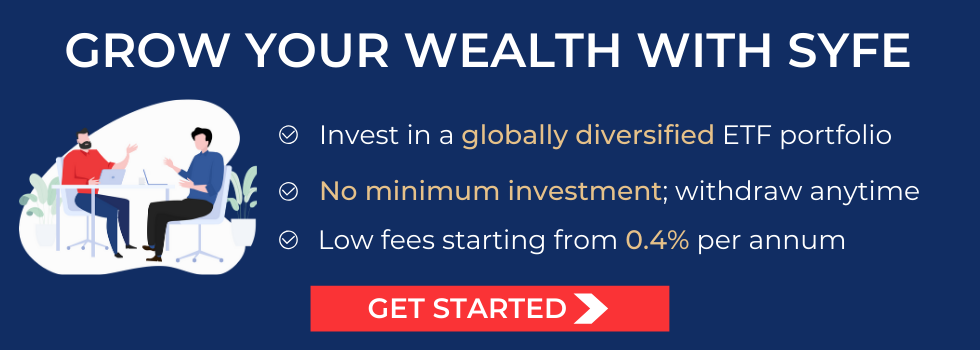
It’s time to add exchange-traded funds (ETFs) to your wealth-building arsenal.
Offering low fees, instant diversification and easy access, ETFs are the ideal investment tools for the smart investor. Over the next decade, the ETF market is poised to hit US$50 trillion in assets, according to Bank of America. As an increasing number of retail and institutional investors turn to ETFs for wealth creation, here’s a look at the five key attributes that make ETFs your right choice.
Low cost
ETFs have much lower fees compared to unit trusts. For instance, an investor looking to invest in Singapore equity funds can choose between a unit trust like the Aberdeen Standard Singapore Equity Fund or an ETF like the Straits Times Index ETF. While both funds have largely similar holdings, there is a significant cost difference. The Aberdeen Standard Singapore Equity Fund has an expense ratio of 1.64% while the Straits Times Index ETF has an expense ratio of 0.3%.
Higher expense ratios always eat into an investor’s returns. Let’s assume you plan to invest $1,000 a month for a period of 20 years. Assuming that both funds generate returns of 6% per annum, the 1.34% difference in expense ratio results in a $62,546 difference in portfolio value after 20 years!
The cost difference mainly has to do with the fact that unit trusts tend to be actively managed. Fund managers buy and sell securities in the hopes of outperforming the index, which inevitably translates to higher fees for investors. These fees eat into any excess returns the fund manager is able to produce, which is usually why actively managed funds underperform their benchmark indexes over time.
ETFs, on the other hand, are passively managed index funds that aim to mimic the performance of the index they track. As a result, they have much lower management fees and expense ratios than actively managed unit trusts.
Instant diversification
A single ETF can hold hundreds of different securities. For instance, the Standard & Poor’s 500 index (S&P 500) holds 500 large-cap US stocks. This allows investors to gain exposure to the US market without having to individually buy 500 different stocks. Unless you have very deep pockets, the trading and brokerage charges of such an endeavor can cost a small fortune.
A balanced, diversified investment portfolio is the key to building long-term wealth. This is a crucial component of Syfe’s risk-managed investment strategy. A typical Syfe portfolio holds more than 20 ETFs diversified across asset classes, sectors and geographies, so investors are never overly exposed to any particular asset, sector or country.
Access to broader markets
For investors who wish to invest in specific sectors or difficult-to-access markets, there is usually an ETF offering exposure to that particular sector. From ETFs that focus on specific industries such as energy and healthcare, to more niche ETFs that cover cybersecurity and gaming, investors can choose from a wide array of ETFs to meet their investment needs.
Liquidity
Much like a stock, ETFs trade on an exchange, and they can be bought and sold easily throughout the trading day. This gives you almost instantaneous access to your cash when you sell your ETFs.
There is however a small catch for investors who want to buy their own ETFs. Since ETFs trade like stocks, investors have to pay brokerage fees each time they buy or sell their ETFs. Online brokerages charge as much as $25 in minimum fees per transaction, or 0.18% to 0.28% of your trade, whichever is higher. These fees can add up, especially if you are employing a dollar cost averaging strategy.
But with Syfe, investors don’t have to pay brokerage fees, even if they buy more ETFs each month. There are no entry or exit fees as well, so costs are further kept down.
Transparency
ETFs are generally more transparent compared to unit trusts. You can easily go online to view the most updated, complete holdings of almost every ETF in the world. Unit trusts typically only disclose their updated holdings every quarter. The actual investment approach or strategy deployed by the unit trust may have changed within those months, and this may impact your asset allocation plans.
Whether you’re looking to build your net worth or invest for retirement, ETFs have a place in your portfolio. Unsure how to pick the right ETFs? Learn more about your ideal ETF portfolio here.

This article first appeared on TheFinance.SG as a guest post.




You must be logged in to post a comment.